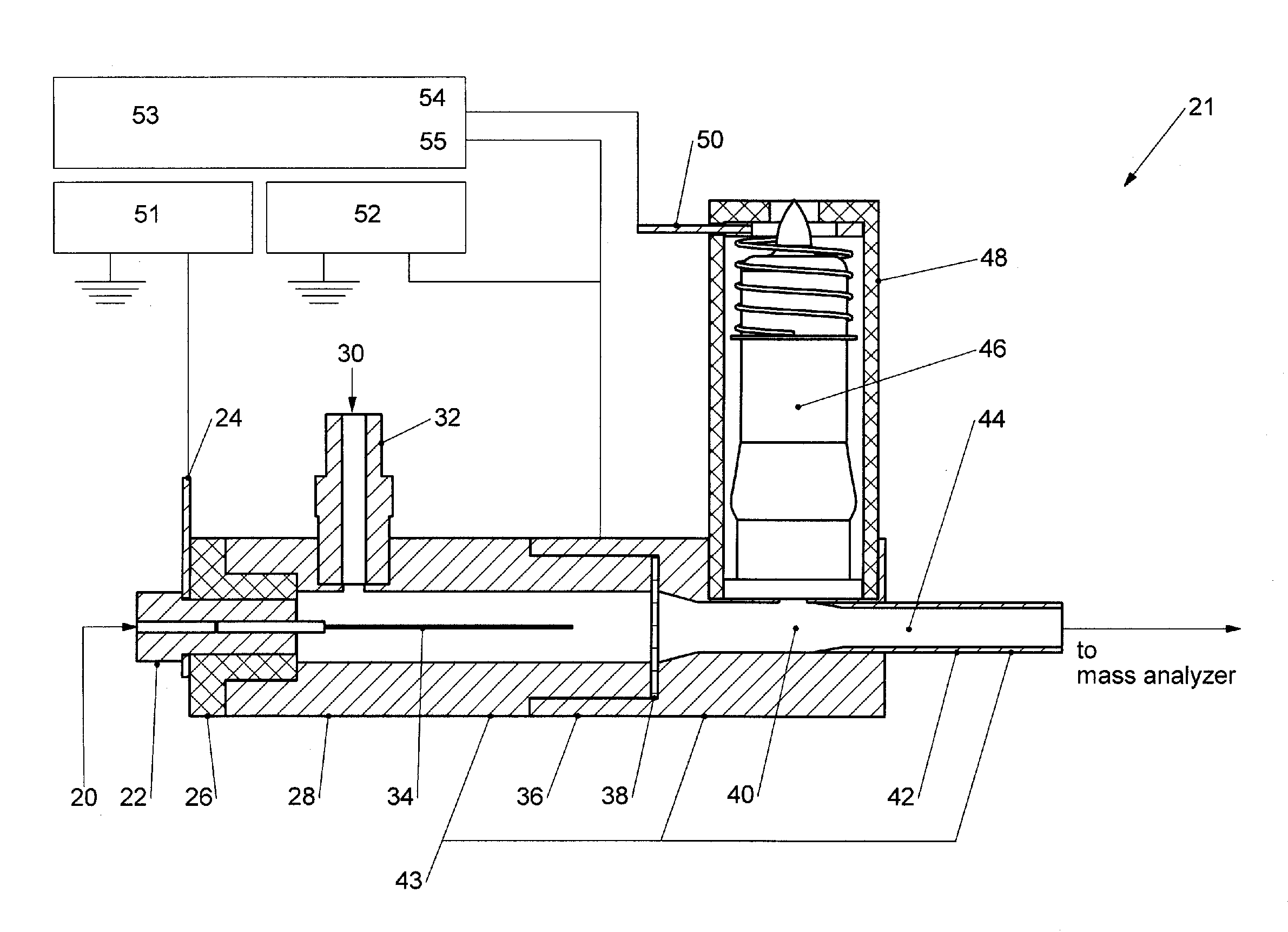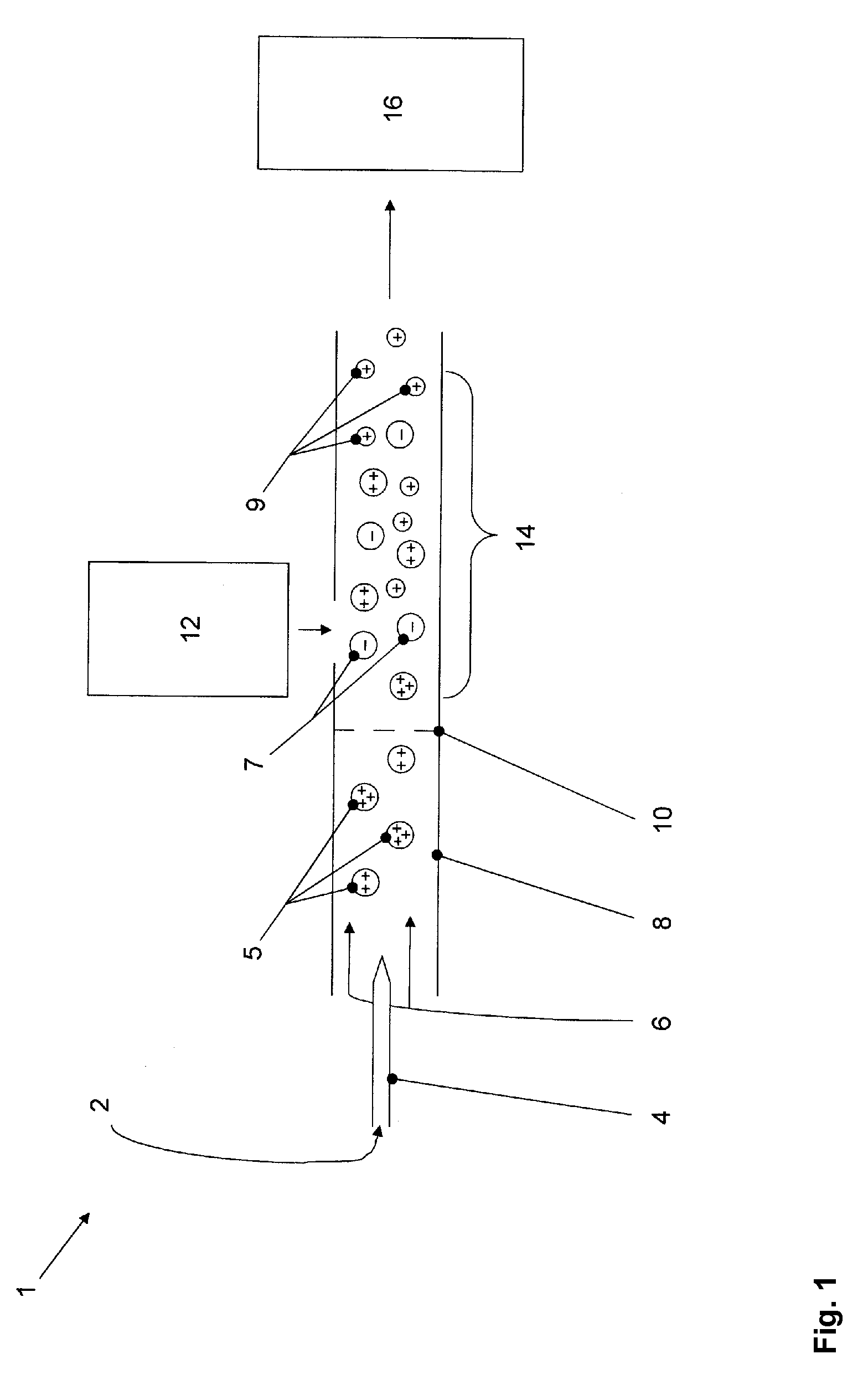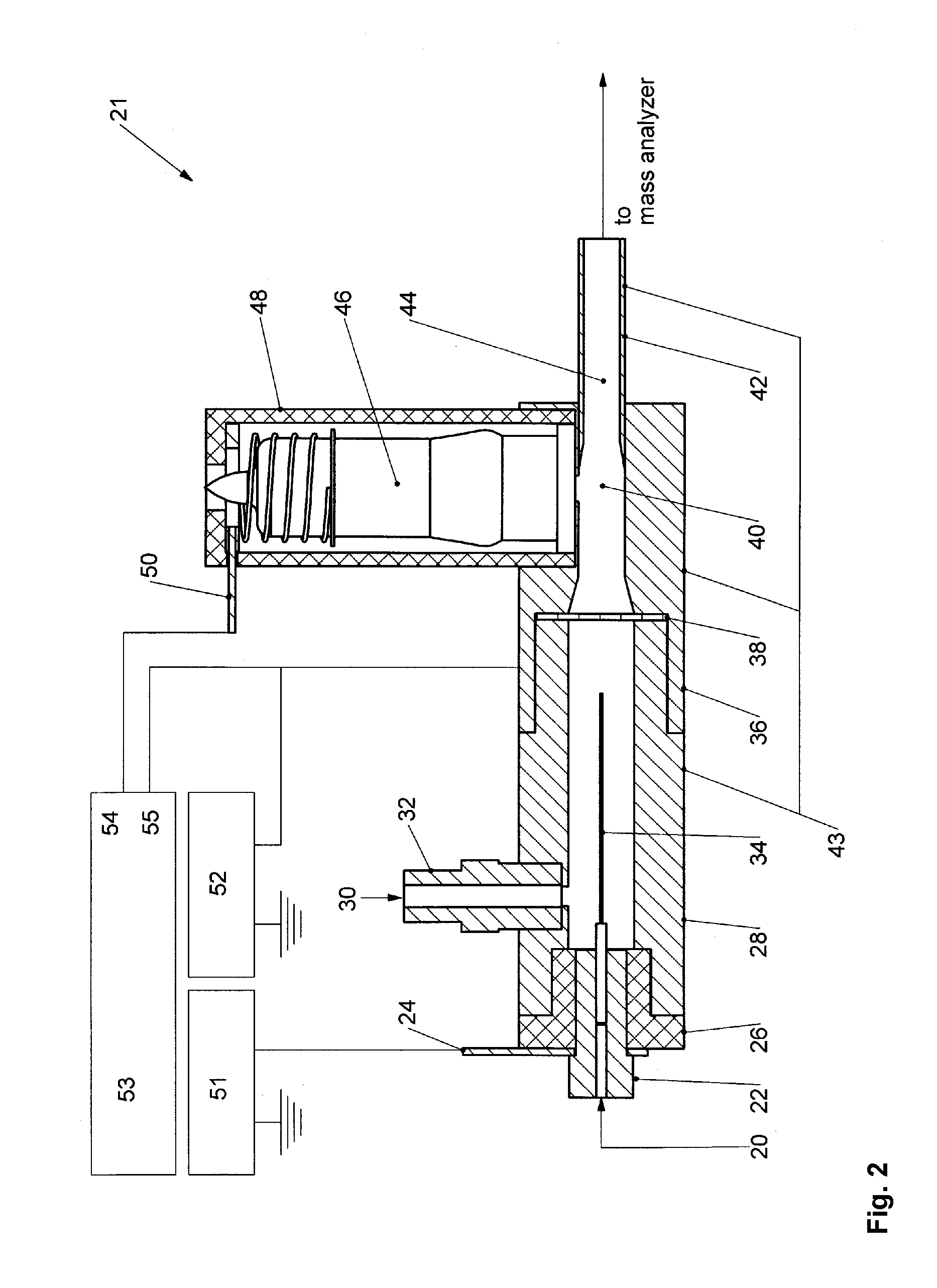AP-ECD methods and apparatus for mass spectrometric analysis of peptides and proteins
a mass spectrometry and peptide technology, applied in the field of mass spectrometry, can solve the problems of inability to obtain complete sequence and ptm-site information for peptides through cid, the original ecd method suffers from the substantial shortcoming of requiring highly expensive and specialized instruments
- Summary
- Abstract
- Description
- Claims
- Application Information
AI Technical Summary
Benefits of technology
Problems solved by technology
Method used
Image
Examples
Embodiment Construction
[0031]Referring to FIG. 1, there is illustrated a schematic diagram for an in-source atmospheric pressure electron capture dissociation (AP-ECD) method for mass spectrometric analysis of peptide and protein samples (1) in accordance with an embodiment of the present invention. A liquid sample (2) is introduced into an electrified sprayer (4) by which gas-phase positively charged analyte ions having multiple positive charges (5) are produced. The positively charged analyte ions (5) are swept from the electrified sprayer (4) by a flow of gas (6) through a guide (8) for guiding the positively charged analyte ions (5) towards a downstream reaction region (14) within the guide (8). A wire screen (10) is situated within the guide (8) between the electrified sprayer (4) and the reaction region (14) to shield the reaction region (14) from the electric field of the electrified sprayer (4). Negatively charged species (either electrons or anions) (7) are generated using a negatively charged re...
PUM
 Login to View More
Login to View More Abstract
Description
Claims
Application Information
 Login to View More
Login to View More - R&D
- Intellectual Property
- Life Sciences
- Materials
- Tech Scout
- Unparalleled Data Quality
- Higher Quality Content
- 60% Fewer Hallucinations
Browse by: Latest US Patents, China's latest patents, Technical Efficacy Thesaurus, Application Domain, Technology Topic, Popular Technical Reports.
© 2025 PatSnap. All rights reserved.Legal|Privacy policy|Modern Slavery Act Transparency Statement|Sitemap|About US| Contact US: help@patsnap.com



